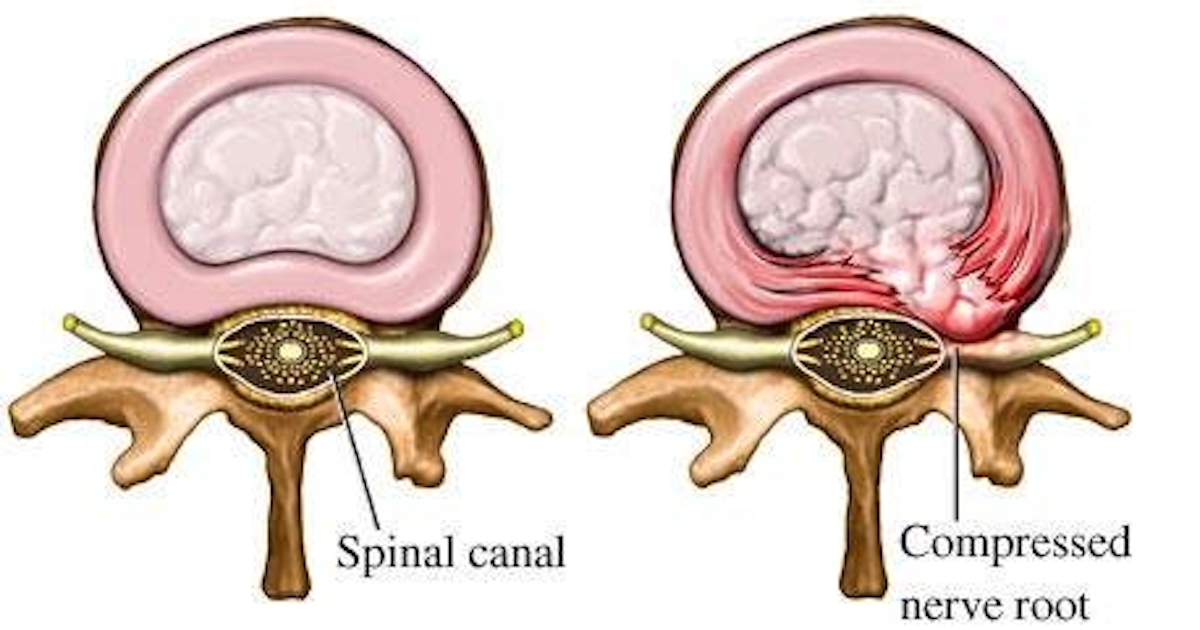
A herniated disc, also known as a slipped disc or ruptured disc, can cause persistent pain, reduced mobility, and nerve irritation. For individuals experiencing discomfort due to a herniated disc, finding an effective, non-invasive treatment is often a priority.
Chiropractic care is commonly sought for spinal conditions, but how effective is it for herniated discs? This blog explores the role of chiropractic care in managing herniated discs, including potential benefits, limitations, and whether it may be a suitable treatment for your condition.

The spinal discs act as shock absorbers between the vertebrae, helping with flexibility and movement. When a disc becomes damaged or weakened, the soft, gel-like center (nucleus pulposus) may push through the tough outer layer (annulus fibrosus), resulting in a herniated disc.
✔ Back or neck pain (depending on the affected area of the spine) ✔ Numbness, tingling, or weakness in the arms or legs ✔ Pain with cough or sneeze ✔ Pain that worsens with forward bending or prolonged sitting ✔ Sciatica (radiating pain down the leg) when the herniation affects the lower back
Herniated discs can develop due to age-related degeneration, improper lifting techniques, or traumatic injuries. Treatment options vary, and chiropractic care is one approach that some individuals explore for relief.
Chiropractic care is a non-invasive approach that focuses on spinal health and mobility. Chiropractors use various techniques to restore movement, reduce nerve irritation, and support spinal function.
A systematic review of spinal manipulative therapy (SMT) suggests that manual therapy techniques may provide relief for certain spinal conditions, though results can vary based on individual cases.

Chiropractors develop individualized care plans based on each patient’s specific condition. However, chiropractic care is not a cure for herniated discs, and treatment should be approached cautiously for individuals with severe cases or nerve compression syndromes.
A chiropractor may use several techniques to help manage herniated disc symptoms, including:
Not all techniques are appropriate for every patient, and a thorough assessment is necessary before beginning chiropractic treatment.
While some patients find relief with chiropractic care, it is not the only treatment option for herniated discs. Other approaches include:
A multidisciplinary approach may be beneficial, and chiropractors often collaborate with medical doctors and physical therapists when needed.
Chiropractic care may not be suitable for certain cases of herniated discs, including:
If any of these conditions are present, immediate medical evaluation is necessary. Diagnostic imaging (MRI or X-ray) is often used to determine the severity of disc herniation before starting chiropractic care.
For individuals with mild to moderate herniated discs, chiropractic care may provide:
✔ Pain relief – Some patients experience reduced nerve irritation and improved spinal mobility. ✔ Improved flexibility – Techniques may support movement efficiency and spinal function. ✔ Non-invasive approach – Offers an alternative to surgery and long-term medication use. ✔ Personalized care – Treatment is tailored to the patient’s condition and goals.
Results vary among individuals, and chiropractic care should be part of a comprehensive approach that includes exercise, movement modifications, and medical supervision when necessary.
Chiropractic care may be a viable option for some individuals with herniated discs, especially those seeking non-invasive pain management. However, the effectiveness of treatment varies, and a thorough clinical evaluation by your chiropractor is necessary to determine the best approach.
If you are experiencing back pain, radiating nerve discomfort, or mobility restrictions, consulting with a chiropractor may help you understand whether chiropractic care is appropriate for your condition.
📞 Call us at 9300 0095 or Book Online Here to schedule a consultation.
Lakeside Chiropractic is central to the northern suburbs of Perth, located in the City of Joondalup. If you are in the surrounding suburbs such as Yanchep - 6035, Tapping - 6065, Carramar - 6031, Currambine - 6028, Wanneroo - 6065, Heathridge - 6027, Edgewater - 6027, Gnangara - 6077, Mullaloo - 6027, Padbury - 6025, Kingsley - 6026, Woodvale - 6026, Banksia Grove - 6031, or Duncraig - 6023, our team is here to assist you.
This blog is for informational purposes only and does not replace professional medical advice, diagnosis, or treatment. Individual results may vary.